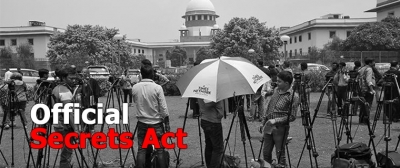
The first Indian Official Secrets Act was enacted in 1889 to suppress the voices of the Indian newspapers and publications that were emerging in several languages across India towards the end of the 19th Century. The publications were fearlessly criticising the British Raj and building political consciousness among the people of India. According to reports, it was also a time when some government officials doubled as correspondents for newspapers. This notification prohibited them from making official documents public,
The 1889 Act was amended into a more stringent law in 1904 during Lord Curzon’s tenure as Viceroy of India from 1899 to 1905. In April 1923, a newer version of the Official Secrets Act was notified under Viceroy Lord Reading. The Indian Official Secrets Act (Act No XIX of 1923) is essentially India’s anti-espionage law and has under its purview all matters of secrecy and confidentiality with regard to the government. It provides the framework for dealing with espionage, sedition, and other potential threats to the integrity of the nation. The secret information can be any official code, password, sketch, plan, model, article, note, document, or information.
The law applies to servants of the Government and Indian citizens residing in and outside the country. A guilty person could be charged with 14 years of imprisonment, a fine, or both.
This Act of 1923 remains in force India till date, with certain amendments made to it over time. Owing to its lack of clarity over the definition of what classifies as “secret” documents or information, there have been long-expressed concerns that the Act can be misused by the government choosing to brand information or documents as “official secrets” as per their convenience.
Did you know?
Kesari, a Marathi newspaper, was founded by Lokmanya Bal Gangadhar Tilak in 1881. He also published Mahratta in English. An online Marathi periodical called The Daily Kesari continues to be published. edited by Tilak’s great grandson, Deepak Tilak.
Picture Credit : Google




